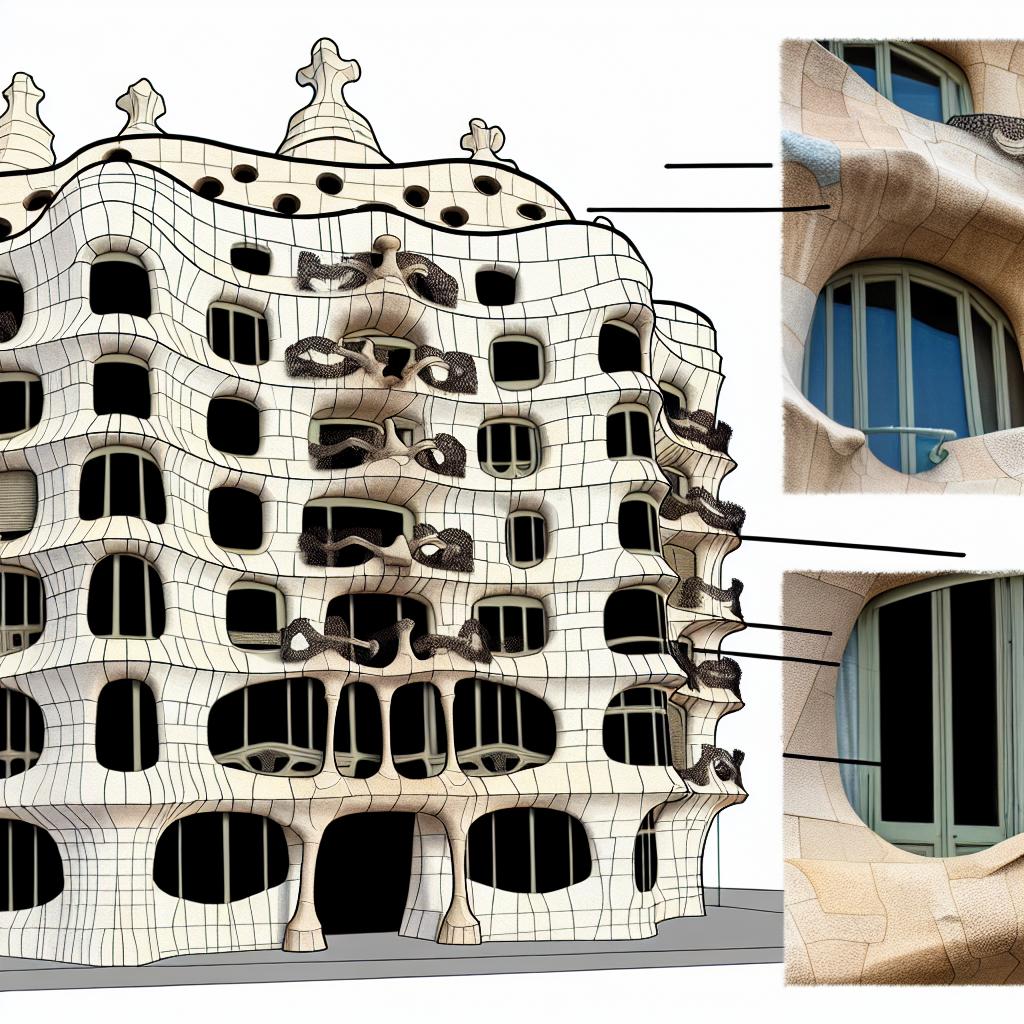Contents
Overview of Casa Milà
Casa Milà, commonly known as La Pedrera, stands as a paramount example of the genius of Antoni Gaudí, a celebrated Catalan architect. Situated in the heart of Barcelona, Spain, this architectural marvel showcases Gaudí’s distinctive style, characterized by organic forms and innovative structures. Commissioned in 1906 and completed in 1912, Casa Milà has earned prestigious recognition as a UNESCO World Heritage site due to its unique design and historical significance. Numerous architectural sites provide further insights and detailed descriptions for those interested in deepening their understanding of Gaudí’s masterpiece.
Architectural Design and Structure
The architectural design of Casa Milà is a testament to Gaudí’s deep appreciation for the natural world. The building’s façade is constructed with limestone and decorated with wrought iron, creating an undulating, wave-like appearance that draws inspiration from the irregular forms of nature. One of the hallmarks of Gaudí’s architectural approach is the absence of straight lines, favoring curves and organic shapes that evoke the beauty and unpredictability of the natural environment. This characteristic approach enabled Gaudí to reshape the possibilities of architectural design, particularly through the pioneering use of a steel frame, which was among the first in Barcelona. This structural choice provided unparalleled flexibility and creativity in designing the spacious apartments within, revolutionizing the architectural landscape of the city.
Interior Details
The interior of Casa Milà mirrors the same innovative principles seen in its exterior. The floor plan, ingeniously designed around two expansive circular courtyards, allows natural light to permeate the rooms, thus erasing the boundary between indoors and outdoors. Gaudí’s attention to detail is apparent in every element—from the intricate and curved walls to the uniquely crafted doors and the colorful tile mosaics that enhance the interior surfaces. These mosaics are not just decorative; they are a narrative of Gaudí’s journey in blending functionality with beauty. The design is intentionally organic, reflecting a harmonious unity between the building’s unconventional exterior and its interior spaces, offering an all-encompassing architectural experience.
The Roof Terrace
A visit to Casa Milà is incomplete without stepping onto its famed roof terrace. This area is not just a functional space but a dreamlike landscape that captivates the imagination. The terrace is characterized by its sinuous pathways and unique chimneys, often called “warriors” for their helmet-like structure. These chimneys, a blend of functionality and decorative flair, protect the building while providing ventilation. Gaudí’s inventive use of forms and materials on this terrace contributes to its dramatic and enduring allure. Visitors are encouraged to explore the terrace extensively as it continuously reveals new perspectives and enhances the overall experience of Casa Milà.
The Influence of Nature and Religion
Antoni Gaudí’s work is profoundly influenced by two main elements: nature and religion. These influences are omnipresent throughout Casa Milà. The building’s façade, which mimics the undulating forms of waves and cliffs, is akin to nature’s artwork, with its fluid and dynamic lines. The interior spaces echo the spirals found in shells and the intricate patterns seen in plants, demonstrating Gaudí’s keen observation of natural phenomena. Moreover, Gaudí’s spiritual beliefs play a significant role in his designs. Religious symbolism is subtly embedded within the architecture, most notably in the crosses that adorn various parts of the building, symbolizing Gaudí’s deep reverence for his faith.
For those intrigued by the intricacies of Casa Milà and the broader context of its architectural significance, a wealth of resources is available. These include architectural history publications and educational websites dedicated to Antoni Gaudí’s legacy in modernist architecture. Such resources offer comprehensive accounts and analyses, providing a deeper understanding of how Gaudí’s works continue to inspire and affect contemporary architecture. Through these sources, one can explore the remarkable journey of an architect whose visionary approach forever transformed the urban landscapes.

